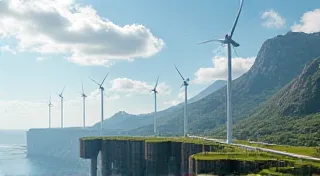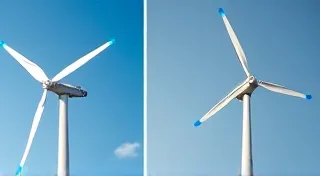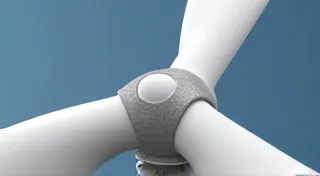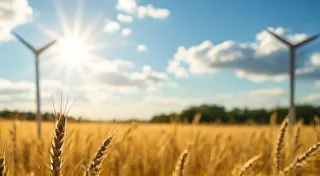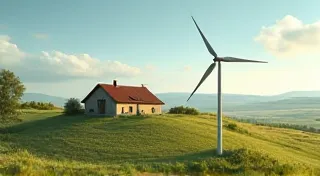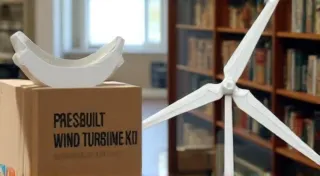Comparing Vertical Axis Wind Turbines (VAWT) vs. Horizontal Axis Wind Turbines (HAWT)
Building your own wind turbine is a fantastic way to explore renewable energy and harness the power of the wind. But before you start cutting metal and assembling blades, it’s crucial to understand the different types of wind turbines available. The two primary designs are Horizontal Axis Wind Turbines (HAWTs) and Vertical Axis Wind Turbines (VAWTs). This article will break down their differences, advantages, and disadvantages to help you choose the best type for your DIY project. Before diving into the specifics of each turbine type, it's important to understand some fundamental concepts, which you can explore in more detail in a guide to wind turbine basics. This will set the groundwork for making informed decisions about your project.
What is a Horizontal Axis Wind Turbine (HAWT)?
HAWTs are the most common type of wind turbine you’ll see in wind farms. They feature blades rotating around a horizontal axis, typically facing into the wind. Think of a traditional windmill.
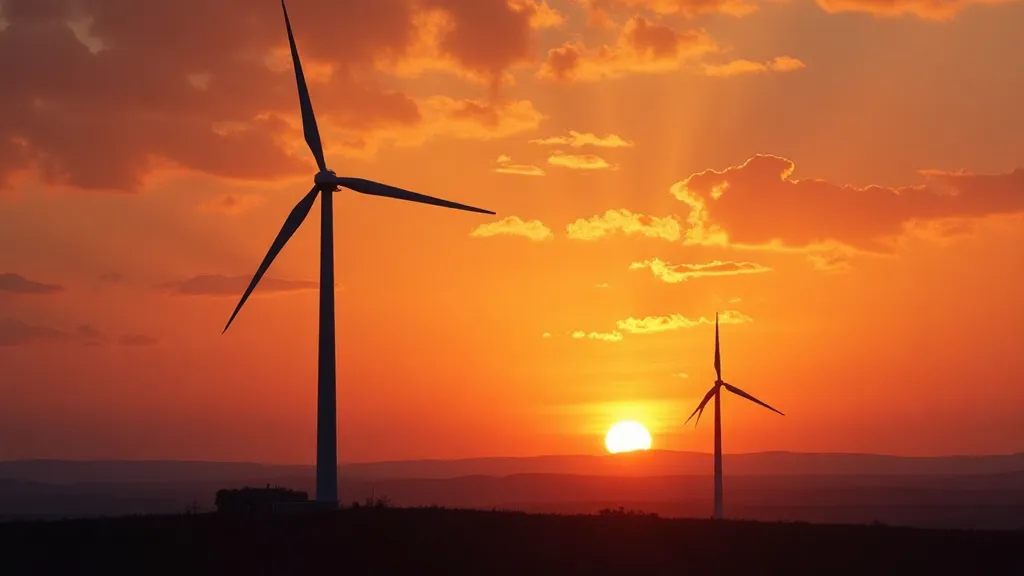
Advantages of HAWTs:
- Higher Efficiency: HAWTs generally have higher efficiency because their blades can be designed to optimize airflow. This efficiency stems from the ability to precisely control blade pitch and aerodynamics, allowing for maximum energy capture from the wind.
- Taller Towers: Placing the rotor on a tall tower allows access to stronger, less turbulent winds. The higher you go, the less obstructed the wind flow is, leading to more consistent power generation.
- Established Technology: HAWT technology is well-established, with a wide range of resources and expertise available. This maturity translates to readily available components, designs, and troubleshooting guides.
Disadvantages of HAWTs:
- Complex Construction: Building a HAWT requires precise engineering and construction to ensure balance and efficiency. The complexity extends to the gearbox, yaw mechanism, and blade design.
- Yaw Mechanism: They need a "yaw" mechanism to constantly adjust and face the wind, adding complexity. This mechanism requires power and maintenance, adding to the overall cost and complexity of the system.
- Visual Impact: HAWTs can be visually imposing, which might be a concern for some locations. The large size and rotating blades can be disruptive to the landscape.
- Transportation and Installation Challenges: Due to their size and weight, transporting and installing HAWTs can be logistically complex and expensive. Specialized equipment and experienced teams are usually required.
What is a Vertical Axis Wind Turbine (VAWT)?
VAWTs, as the name suggests, have blades that rotate around a vertical axis. There are different subtypes, including Darrieus (eggbeater) and Savonius turbines, each with its own characteristics. Savonius turbines, in particular, are often considered a good starting point for DIY projects due to their simpler design. Learning about understanding wind turbine basics can help guide your decision.
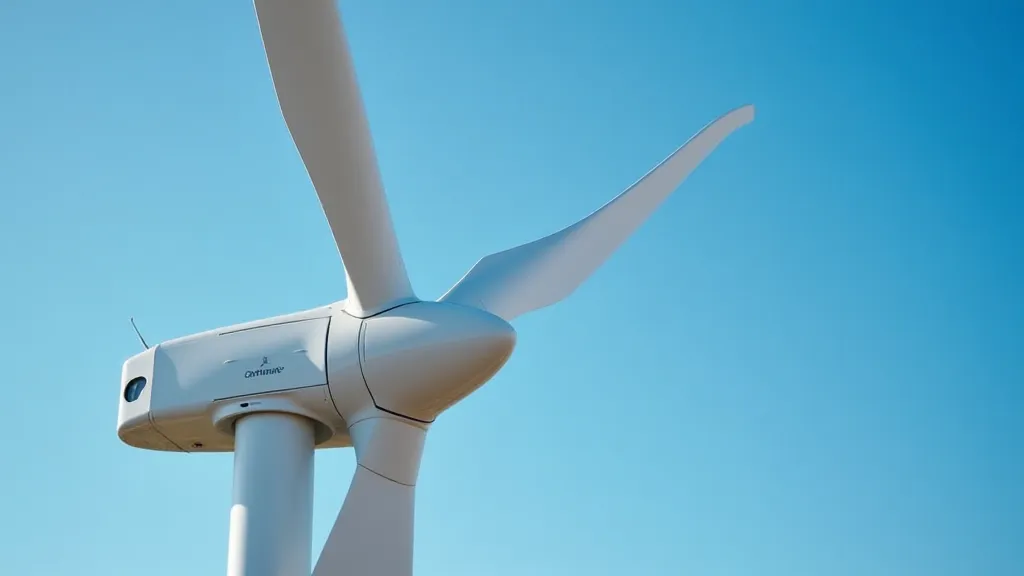
Advantages of VAWTs:
- Omnidirectional: VAWTs don't need to be pointed into the wind, making them suitable for locations with variable wind directions. This is a significant advantage in urban environments or areas with unpredictable wind patterns.
- Simpler Design: Many VAWT designs are mechanically simpler than HAWTs, potentially easier to build for a DIY project. Savonius turbines, for example, are remarkably easy to construct with readily available materials.
- Lower Noise: Generally operate with less noise than HAWTs. The reduced noise levels make them more suitable for residential areas or locations where noise pollution is a concern.
- Ground-Level Maintenance: The generator and gearbox can often be located at ground level, simplifying maintenance. This eliminates the need for specialized equipment and reduces maintenance costs.
- Scalability: VAWTs can be more easily scaled for different power needs, making them suitable for both small-scale and large-scale applications.
Disadvantages of VAWTs:
- Lower Efficiency: VAWTs typically have lower efficiency compared to HAWTs. This is primarily due to the aerodynamic challenges associated with vertical blade rotation.
- Starting Issues: Some VAWT designs struggle to start rotating in low wind conditions. This can be a significant limitation in areas with inconsistent wind speeds.
- Structural Challenges: Can experience structural challenges due to the constantly changing loads on the blades. The fluctuating forces on the blades require robust designs to prevent fatigue and failure.
- Lower Power Output: Generally, VAWTs produce less power than HAWTs of comparable size, making them less suitable for large-scale power generation.
Which Turbine is Best for Your DIY Project?
The choice between a HAWT and VAWT depends on your specific goals and resources. It’s worth noting that even small-scale wind power generation benefits from careful resource assessment. Consider researching wind resource assessment techniques to determine the suitability of your location.
- For a beginner looking for a simpler build, a Savonius VAWT is a good starting point. Their construction is relatively straightforward and requires minimal tools and expertise.
- For those with more experience and access to more advanced tools, a Darrieus VAWT or even a small HAWT can be rewarding, but require more precision and engineering knowledge.
- Consider the available space and wind conditions: VAWTs can be a good option for urban environments or areas with turbulent wind. Their omnidirectional nature makes them less reliant on constant wind direction.
- Think about the intended use: Are you looking to power a small appliance, charge a battery, or contribute to the grid? The scale of your project will influence the type and size of turbine you choose.
If you're interested in generating electricity from wind, it’s often beneficial to explore other methods like building your own alternator. Check out DIY wind turbine generator information for more options.
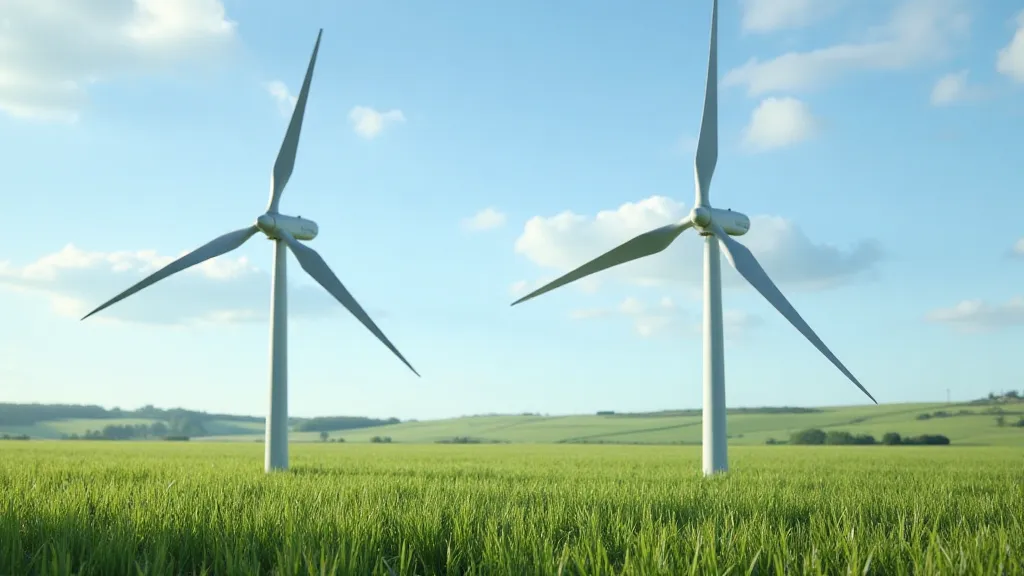
Ultimately, the best way to learn is by doing. Research thoroughly, experiment with different designs, and enjoy the process of harnessing the power of the wind! The future of small-scale wind power is constantly evolving, with exciting innovations on the horizon – learn more about the future of small-scale wind power.
